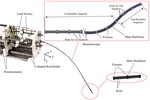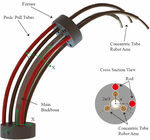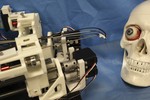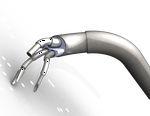About Me
Zisos Mitros is a mechanical engineer with a PhD in Robotics from UCL. He has more than 7-years experience in mechanical design, robotics and systems integration. Currently, he is a Test Engineer in Beyond Gravity (formerly RUAG Space). He has also worked as a Research Assistant in Space Robotics, in projects funded by ESA and as a PhD candidate in Surgical Robotics in an ERC-funded project.
Interests
- Robotics
- Mechanical Design & Manufacture
- Dynamic Systems modelling & Control
Education
PhD in Robotics, 2022
University College London, UK
MPhil in Biomedical Engineering, 2018
University College London, UK
MEng in Mechanical Engineering, 2016
National Technical University of Athens, Greece





![[2021] Autonomous Steering of Concentric Tube Robots via Nonlinear Model Predictive Control](/publication/frontiers_2021/featured_hu13d161404074ff80fe91d18603e70538_185705_150x0_resize_q90_lanczos.jpg)